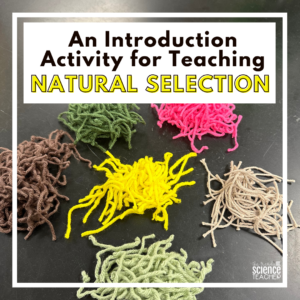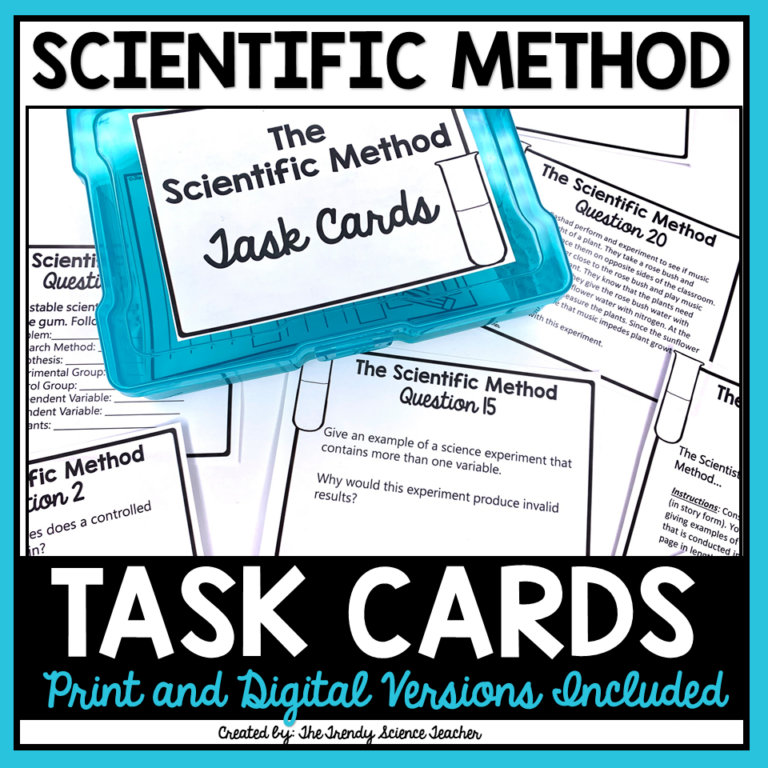
Cell Organelle Speed Dating Activity

I’ve got a super fun and engaging activity that your students will be talking about long after it’s over! I have been hosting my cell organelles speed dating event for many years and it never fails to fully engage my Biology kiddos. It’s easy to set up, student-directed, and is perfect for introducing organelles at the beginning of a cell unit. Keep reading to learn how I implement my Cell Organelle Speed Dating Activity.

In today’s post, I will walk you through the set-up and execution of this activity. You can totally do this without purchasing anything. However, if you truly want to hit the EASY button and want to grab all of the printables, lesson slides, and notes that I discuss in this post, then click HERE.
Day 1- The Research
This activity takes my students two 55-minute class periods. The first day is dedicated to research and the second day is when the fun happens. To start, I assign each student an organelle to research and provide them with a name tent template to complete. Since this activity serves as an introduction to cell organelles, I want my students to get accurate information from their classmates. I make it a point to walk around the classroom and check the information that students are putting on their templates.

Once students have researched their organelle and completed the name tent template, they must then create a school appropriate pick-up line for their organelle. (Note: If you teach middle school, I do not recommend allowing your students search the internet for a pick up line. There are some terribly inappropriate ones out there!) I am always amazed at how creative my students get for this part of the activity. It’s always a lot of fun hearing the pick-up lines on day 2.
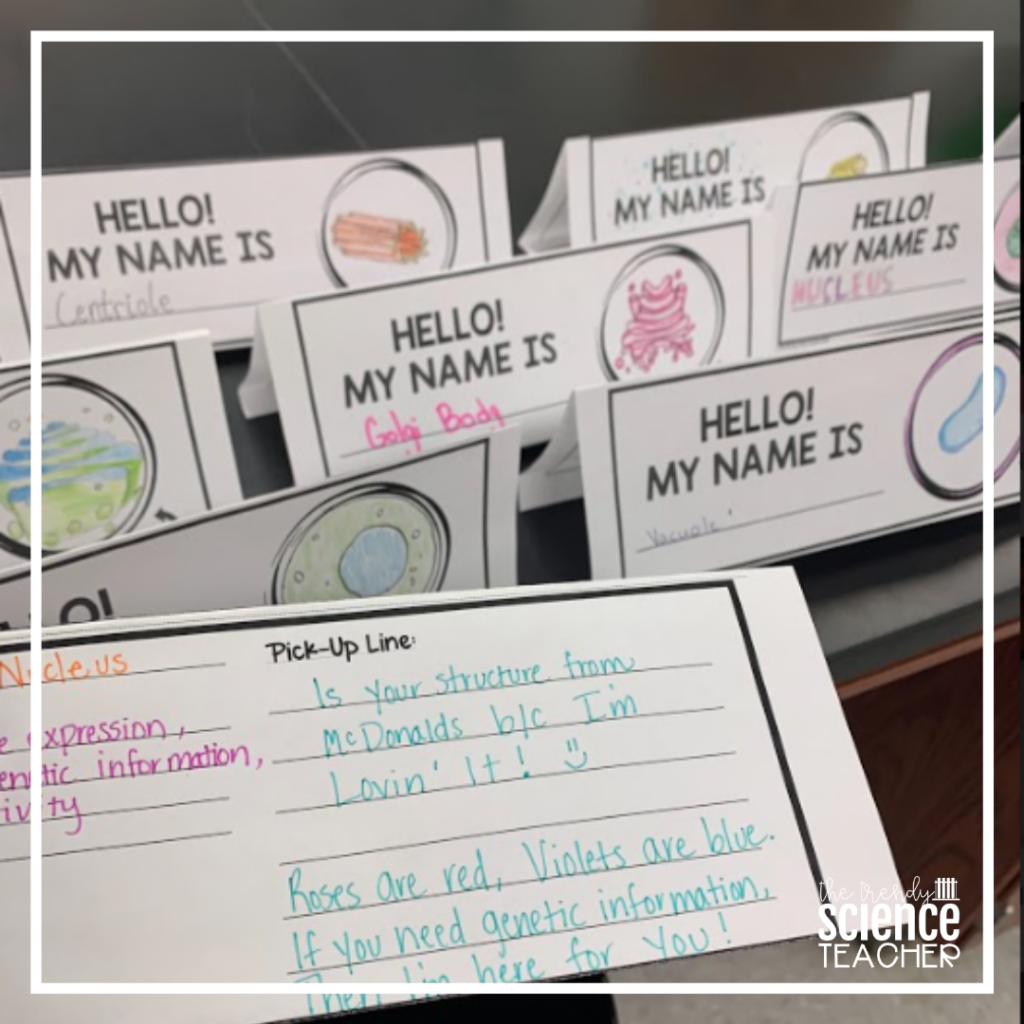
Day 2- The Speed Dating Event
Prepping for the Event
I like to set up my classroom so that my desks are facing one another with a little space between each group of desks. Typically, I have (on average) around 30 students, so I set up 15 pairs of desks that are facing one another.

Numbered sticky notes are placed on half of the desks. Once the activity begins, these sticky notes indicate students that will travel from one “date” to another. The other students remain seated for the activity.
I purchased a wireless doorbell several years ago for rotation activities. It’s the perfect signal that cues the students that it’s time to switch “dates.” During the activity, I ring the doorbell every two minutes to signal a change (changing of roles/changing of dates).
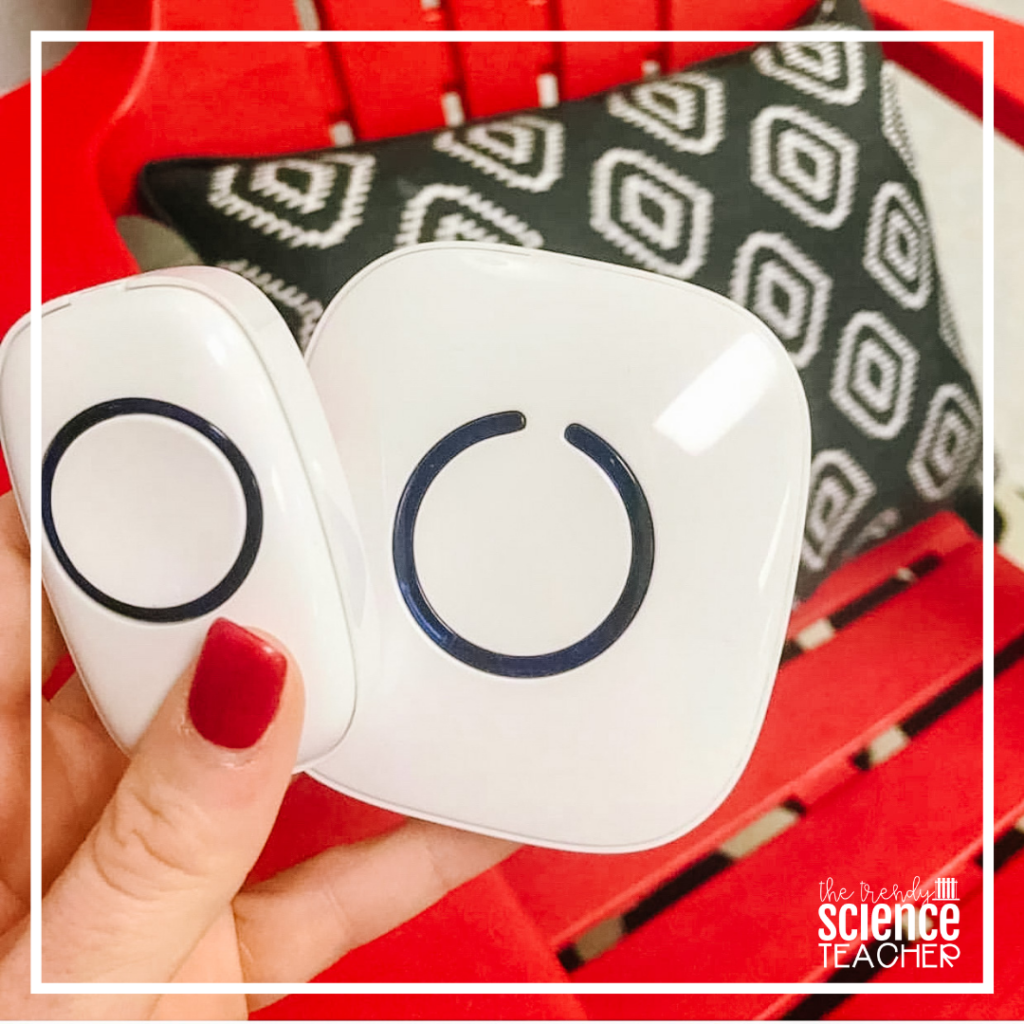
I go ALL OUT for this event. I dim the lights, play my favorite love song playlist, and serve the students punch as they walk into the classroom. They always comment on the extra touches!

The Rules
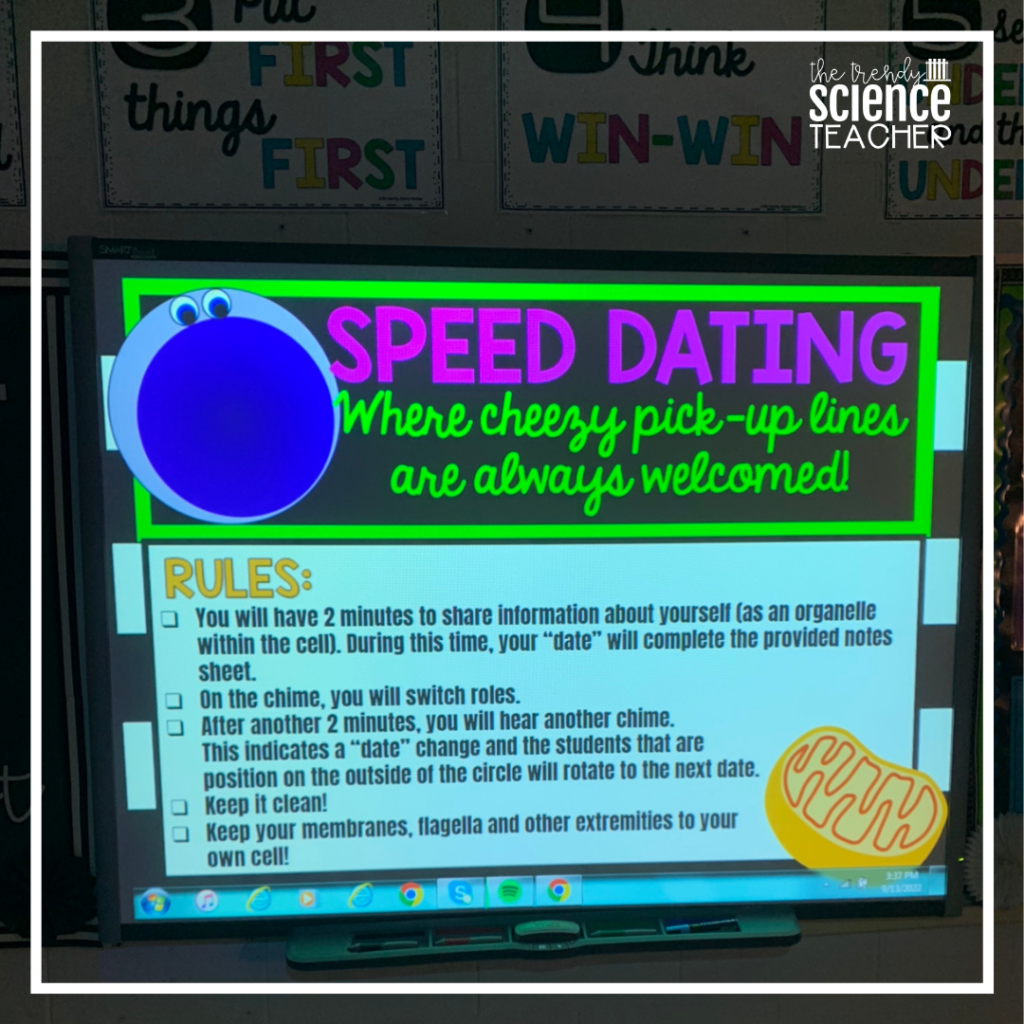
I start by placing my students in desks so that each student has a partner. It’s okay if you have an odd number of students. You can have a “waiting desk” where students sit out a turn. I provide each student with an organelles notes sheet. Students will be taking notes over each organelle while their “date” presents information about themselves. The idea is for each student to be familiar with each organelle in the cell, its function, and to have this information recorded in the form of notes.

At the start of the activity, students will have 2 minutes to share information about themselves (as organelles) as their “date” takes notes. After two minutes, the roles switch. Once four minutes have passed, I ring my doorbell to signal a “date” change. Students that are seated in desks with a sticky note, rotate to the right. This continues until students return to their starting location.

Extra Information
You might find that you have more students than organelles. That’s okay. It doesn’t hurt for students to get the information more than once. At the end of the activity, it might be possible that some students didn’t get to “date” all of the organelles. This is where I initiate a “mix and mingle.” During mix-and-mingle, I have the students walk around the room searching for organelles that they didn’t have a chance to meet. This gives students a chance to collect all of their notes.

Activity Follow-Up
The day after the activity, I follow up with a quick lesson summary of each organelle and provide students with a plant/animal/prokaryotic cell color diagram.
If I have extra time, I will have students use chalk markers to draw plant/animal cells on the lab stations.

Once students have a solid understanding of cell organelles, I have my students participate in Cell Clinic- a cell organelle diagnostic activity. Students pretend to be doctors that are visiting patients with malfunctioning organelles. After listening to their symptoms, the students must determine which organelle is malfunctioning. This activity is a lot of fun, as well!

I hope that today’s post gives you some ideas and inspiration for a fun activity to try with your class. To get the printables, lesson, and instruction slides, click HERE. I’d love to hear from you if you try it and implement it in your own classroom. Until next time….Happy Teaching!

Share it:
- Read more about: BIOLOGY

